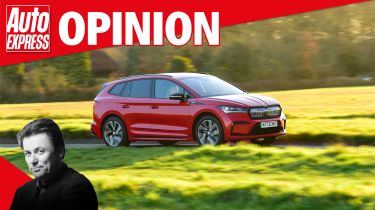'The cure for slow electric car sales is simple - lower prices'
Mike Rutherford thinks the prices of electric cars is the number one thing deterring consumers from making the switch

Never lose sight of the fact that in the vehicle manufacturing, selling and buying game, the most important players are consumers spending their own money on new cars.
Without them, those running the production lines, transport/shipping firms, retail outlets, workshops and related businesses, couldn’t exist. Neither would the circa 800,000 automotive jobs in the UK. Also, could our Government cope without those billions (or is it trillions now?) it grabs by slapping its 20 per cent VAT ‘surcharge’ on car purchases? I think not.
So whether these buyers put their hands in their pockets, find the funds from their small business accounts, or rely on their company/corporate coffers, what are they choosing to purchase this year? The best way to fully answer that question is for me to come back to you in nine months when the full 2024 registration figures will be announced by the Society of Motor Manufacturers and Traders (SMMT). But before then you’ll have to rely on the first of my quarterly summaries of ‘2024 car-buying trends’ based on facts of the official and unofficial variety.
Fact number one, between 1 January and 31 March, purchasers preferred hybrids over everything else. This is the type of vehicle that emphatically emerged as the top choice among those paying real money for what they consider to be the most appropriate cars for themselves. And who can blame them for their decisions? Not me, that’s for sure. We’re talking here about a wide range of cars that fall into three official categories: plug-in hybrid electric vehicle (PHEV), hybrid electric vehicle (HEV), and mild-hybrid electric vehicle (MHEV). And surprise, surprise – of the 233,000 hybrids sold, comparatively inexpensive MHEVs appealed most to paying customers.
Sitting comfortably in the No. 2 slot behind those hybrids are pure-petrol cars (212,000 models sold so far in ’24). Pure-electric vehicles remain way behind in third place (just over 84,000 sold), while pure-diesels (almost 17,000) languish at the bottom of the table. Put another way, in the first quarter of ’24, a huge 84.5 per cent of the cars that people chose to buy or register had petrol or diesel tanks, while a mere 15.5 per cent didn’t.
When it comes to the top 10 selling models over the same three months, there isn’t a pure-EV range in sight. Ford’s Puma is the best seller, followed by the Nissan Qashqai, Kia Sportage, Nissan Juke, Audi A3, BMW 1 Series, VW Golf, MINI, MG HS and VW T-Roc.
The trend in the first quarter of 2024 is crystal clear. The overwhelming majority (almost 85 purchasers in every 100) went for cars with internal-combustion engines that are either pure or aided and abetted by mild, full or plug-in hybrid EV tech.
In the same period, the minority (just over 15 paying customers in every 100) opted for pure-electric vehicles, which continue to sell slowly because they suffer from a condition known in the trade as ‘excessive sticker-price syndrome’. It can be cured almost instantly – if manufacturers, retailers and others are brave enough to play their respective roles in making these 100-per cent EVs more affordable. Problem solved. What’s not to like?
Do you agree with Mike? Let us know your thoughts in the comments section...
Find a car with the experts




